Chord MU61 Handleiding
Chord
Midi-keyboard
MU61
Bekijk gratis de handleiding van Chord MU61 (7 pagina’s), behorend tot de categorie Midi-keyboard. Deze gids werd als nuttig beoordeeld door 82 mensen en kreeg gemiddeld 4.8 sterren uit 41.5 reviews. Heb je een vraag over Chord MU61 of wil je andere gebruikers van dit product iets vragen? Stel een vraag
Pagina 1/7

MU-series MIDI/USB Keyboard Controllers
MU25 -note MIDI/USB Controller Keyboard (169.011) 25
MU49 -note MIDI/USB Controller Keyboard (169.012) 49
MU61 -note MIDI/USB Controller Keyboard (169.013) 61
User Manual
Features
25/49/61 keys with touch velocity sensitivity (5 x velocity curves and selectable keyboard split)
Assignable control pedal (switch or continuous) inputs (1 for MU25, 2 for MU49 MU61) &
Assignable slider control
Pitch Bend Wheel and Modulation Wheel (assignable)
4 x assignable rotary controls (2 banks) and 2 data entry buttons
MIDI and USB output (powered by 9Vdc or USB)
Compatible with Win XP/Vista and Mac OSX, plug-and-play, hot swappable
Compatible with major audio and sequencer software
www.chordmusic.co.uk

Introduction:
Thank you for choosing a Chord MU series MIDI/USB controller. This product has been designed to give ultimate control over
MIDI sound modules and soundcards and form a key part of any project studio or live mul -instrument set-up. Please read the ti
following to get the best from your keyboard controller and avoid damage through misuse.
Warning:
To prevent the risk of fire or electric shock, do not expose any of the components to rain or moisture.
If liquids are spilled on the surface, stop using immediately, allow unit to dry out and have checked by qualified personnel before
further use.
Avoid impact, extreme pressure or heavy vibration to the unit.
There are no user serviceable parts inside the keyboard ref all servicing to qualified service personnel. –er
Safety
When using an optional DC adapter to power the keyboard, ensure that it is a regulated type with correct voltage & polarity
Use only good quality USB and MIDI leads
Only connect standard foot switch or expression pedal to the rear jack inputs.
Do not allow any foreign particles to enter the keyboard through connectors or control apertures
Placement
Position the keyboard on a solid, flat surface or strong, stable keyboard stand with adequate grip to hold steady
Keep out of direct sunlight and away from heat sources.
Keep away from damp or dusty environments.
Ensure cables and power supplies are kept tidy and away from harm
Cleaning
Use a clean dry cloth (or slightly damp) to clean surfaces.
Use a soft brush to clear debris from between the keys
Do not use strong solvents for cleaning the unit.
Functions
The keyboard is velocity sensitive with additional functions labelled above each note key.
This additional function is accessed b the EDIT button. y
When EDIT is pressed, the keyboard provides functions as labelled above each note key, including Program Adjustment, Dual,
Touch Sensitivity Adjustment, Numerical values etc. (the range of functions varies by model)
In addition to the note keys, the MU-series keyboards set of controllers for setting parameter values or offering have a
expression (creative changes/variances of the sound) for on-the-fly effects
Furthermore, control pedals can be connected to the input(s) on the rear panel for even more expression control

Top Panel
1. MODULATION Wheel - Expression wheel, assignable to one of 148 MIDI control parameters Initial setting is MIDI .
control number 1: Modulation.
2. PITCH BEND Wheel Spring loaded expression wheel, assignable to one of 148 MIDI control parameters Initial –.
setting is MIDI control number 146: Pitch Bend
3. DATA +/- Buttons Increment/decrement data entry buttons assignable to one of 1 MIDI control parameters Initial –, 60 .
setting is MIDI control number 154: Octave Shift
4. OCTAVE/TRANSPOSE Indicator - When either of these indicators is on, it indicates that there is an upper/lower
octave shift. When the indicator flashes slowly, it indicates that there an upper/lower transpose shift. When the is
indicator flashes quickly, it indicates that there is a simultaneous upper/lower octave and transpose adjustment. When
the indicator is off, there no octave or transpose shift. is
5. EDIT Button – Switches edit function of note keys on/off
6. EDIT Indicator Indicates that the EDIT function is active (keys will operate as labelled above each note) –
7. SLIDER Fader style controller, assignable to one of MIDI control parameters Initial setting is MIDI control number –148 .
147: Master Volume
8. 3-digit LED Display Shows program/parameter values for MIDI and EDIT functions –
9. SWITCH Button Toggles the rotary dials between 2 groups of control settings: R1-R4 / R5-R8 –
10. Dial Function Group LEDs Indicate which group of parameters is active for rotary dials. –
11. - R8 DialsR1 4 data entry dials, individually assignable to one of 160 MIDI control parameters, divided across 2 –
groups. Initial channel of R1-R4 is 0. Initial controller numbers are 152, 153, 156, 157, which control Program Channel, ,
Tempo and Keyboard Velocity Curve respectively. The initial channels of R5-R8 are 0-3. Initial controller number is 7,
which controls the volume of channels 0-3 respectively. The parameter group of R1-R4 and R5-R8 is switched by the
SWITCH button.
12. Constant Controller Parameter chart A table showing standard MIDI parameter values–
Rear Panel
1. MIDI OUT 5-pin DIN MIDI output to control external sound module or keyboard –
2. PEDAL A Pedal A input 6.3mm jack for switching continuous type pedal control, assignable to one of 152 –or
controllers nitial setting is Soft Pedal. . I
3. PEDAL B Pedal B input 6.3mm jack for switching continuous type pedal control, assignable to one of 152 –or
controllers nitial setting is Sustain Pedal. . I
4. USB USB type B connector for connecting to PC or Mac computer –
5. DC9V Input jack for optional 9Vdc power adapter (300mA, polarity positive- -centre) –to
6. OFF/ON Power switch –
Product specificaties
| Merk: | Chord |
| Categorie: | Midi-keyboard |
| Model: | MU61 |
Heb je hulp nodig?
Als je hulp nodig hebt met Chord MU61 stel dan hieronder een vraag en andere gebruikers zullen je antwoorden
Handleiding Midi-keyboard Chord

28 Maart 2023

7 Maart 2023
Handleiding Midi-keyboard
- Peavey
- Akai
- Motu
- Native Instruments
- Reloop
- Studiologic
- Alesis
- Kurzweil
- Novation
- Keith MCmillen
- Ion
- Medeli
- Doepfer
- Arturia
- Waldorf
Nieuwste handleidingen voor Midi-keyboard
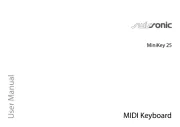
5 Augustus 2025
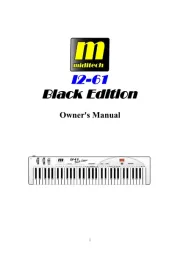
4 Augustus 2025
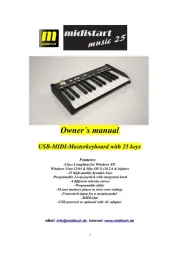
4 Augustus 2025
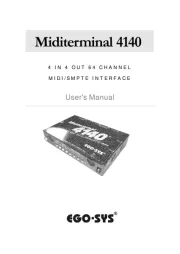
12 Mei 2025
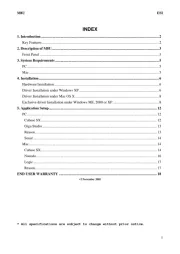
8 Mei 2025
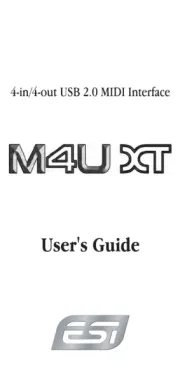
28 April 2025
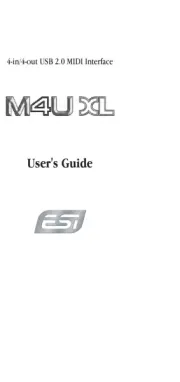
28 April 2025
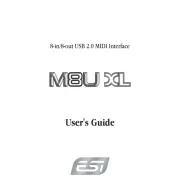
28 April 2025
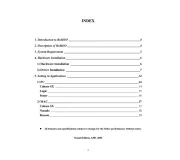
28 April 2025
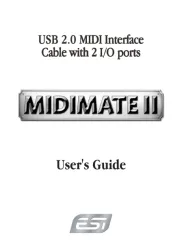
28 April 2025